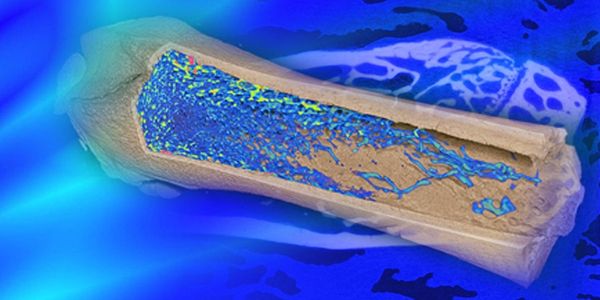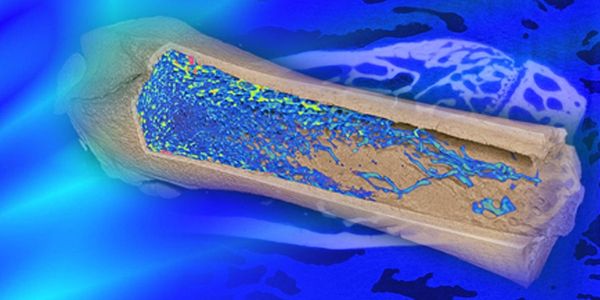Biotechnology Diagnostics
Soil salinity describes the amount of salt present in soil at the aqueous (water) phase. Salt accumulates in the soil during a process known as salinization. Salinization occurs when the water table rises and consequently natural salt is brought to the surface. Because the buildup of salt can harm plants or animals in the environment, soil salinity is often monitored in areas where crops are grown.
-
Multiplexing IHC is a technique that is increasing in demand as more and more researchers and physicians are being tasked with doing more with less. With multiplexing, you have the advantage...Speaker: Mark Hellewell, PhD
Second harmonic generation (SHG) is a biophysical method that sensitively measures real-time conformational change of biomolecules attached to membranes. SHG has recently been applied to dete...
The Chain of Custody in our labs is the unbroken link between the objects used in your research: your people, the animal models, the cell lines, reagents, compounds; the lab instruments and d...
The last two decades have seen an explosion in the volume of oncology data generated using next-generation sequencing (NGS) and multi-omics techniques. As a result, there is a growing need fo...
Speaker:
Devendra Mistry, PhD
Ageing is a complex process that has been observed in all biological systems at every level of organisation. Some anti-ageing interventions have demonstrated life-extending effects in model o...
FEB 26, 2019 | 11:00 AM
DATE: February 26, 2019TIME: 11:00am PST, 2:00pm EST Osteosarcoma is the most common type of primary bone cancer affecting adolescents and children attributed to...
Speaker:
Luke Tattersall, BSc Biomedical Sciences, PhD Candidate
Sponsored By: Thermo Fisher Scientific/Gibco
FEB 26, 2019 | 9:00 AM
DATE: February 26, 2019TIME: 9:00am PST, 12:00pm EST In an era of increasingly high-throughput, large-scale biology, with companies, government and non-prof...
Speaker:
Andrew Brooks, Ph.D.
, Shawn Levy, Ph.D.
, Brad Hamilton
, Fay Betsou, Ph.D
Sponsored By: Brooks Life Sciences
JAN 29, 2019 | 9:00 AM
DATE: January 29. 2019TIME: 09:00am PST, 12:00pm EST In healthy tissue, a reservoir of stem cells gives rise to non-stem cells while simul...
DEC 06, 2018 | 8:00 AM
DATE: December 6, 2018TIME: 11:00am EST, 5:00pm CET Introduction Micro-computed tomography (micro-CT) offers significant advantages o...
DEC 06, 2018 | 1:00 AM
DATE: December 6, 2018TIME: 10:00am CET, 5:00pm CST Intro Micro-computed tomography (micro-CT) offers significant advantage...
NOV 29, 2018 | 9:00 AM
DATE: November 29, 2018TIME: 9:00AM PDTAn overview of primary immune deficiency disorders (PID) and laboratory testing for PIDPrimary immune deficiencies (PIDs), oth...
NOV 20, 2018 | 7:00 AM
DATE: November 20, 2018TIME: 07:00 PSTSince its original development (2008) COLD-PCR has been used by several groups for increasing the sensitivity of mutation detection in di...
The main problem for insufficient cervical cancer screening globally (less than 20% women at risk) is outreach failure. Enabling POCs with modern IT/mobile technology and connecting them with...
Speaker:
Olivera Markovic, MD, PhD
NOV 13, 2018 | 9:00 AM
DATE: November 13, 2018TIME: 9:00am PST, 12:00pm ESTExtracellular vesicles (EVs) are cell-secreted nanoparticles that play a pivotal role in intercellular communic...
Solid phase microextraction (SPME) is a versatile, non-exhaustive sample preparation tool that has been demonstrated to be well-suited for facile and effective analysis of a broad range of co...
Speaker:
Barbara Bojko, PhD
, Janusz Pawliszyn, PhD, FCIC, FRSC
Presented at: Analytical Chemistry Virtual Event Series 2018
As the most common female malignancy, breast cancer is the most likely reason that a woman will die of cancer around the world. Breast cancer mortality has dropped in the U.S. by 35% since 19...
Speaker:
Benjamin Anderson, MD
























